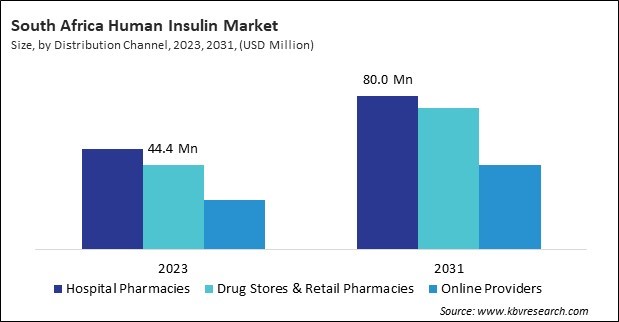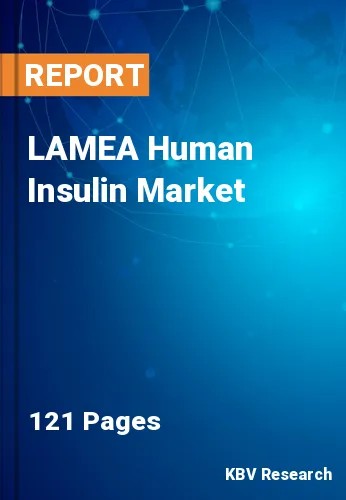The Latin America, Middle East and Africa Human Insulin Market would witness market growth of 5.5% CAGR during the forecast period (2024-2031).
The Brazil market dominated the LAMEA Human Insulin Market by Country in 2023, and would continue to be a dominant market till 2031; thereby, achieving a market value of $451.8 million by 2031. The Argentina market is showcasing a CAGR of 6.4% during (2024 - 2031). Additionally, The UAE market would register a CAGR of 4.8% during (2024 - 2031).

Technological advancements in biotechnology have significantly transformed the human insulin market, developing more effective and safer insulin analogs. These innovations have improved patient outcomes and driven market expansion by addressing some of the key limitations of traditional insulin therapies. Insulin analogs are modified insulin forms that mimic the body’s natural insulin release patterns. Unlike regular the insulin, which has a standard action profile, insulin analogs can be engineered to have different onset times, peak activity periods, and durations of action. This enables the management of blood glucose levels to be more precise and adaptable.
Advances in genetic engineering and protein modification technologies have driven the development of these analogs. Scientists have developed molecules with enhanced pharmacokinetic properties by modifying the amino acid sequence of insulin, thereby improving their absorption, distribution, metabolism, and excretion profiles. These modifications have led to insulin analogs that are more effective in controlling blood glucose levels and offer a lower risk of adverse effects, such as hypoglycemia, a common and potentially dangerous side effect of insulin therapy.
The LAMEA region is witnessing significant growth in this insulin market, driven by improving healthcare access and rising diabetes prevalence. Diabetes has been on the rise at an alarming rate in Latin America, particularly in countries such as Brazil. As per the data provided in 2022 by the Pan American Health Organization, more than 30 million individuals in Brazil were 60 years of age or elderly, accounting for 13 percent of the country's total population. By 2030, this age group will comprise 24 percent of the Brazilian population or approximately 50 million individuals. This increase in the aging population has resulted in an increased number of diabetes cases, which has prompted a greater demand for insulin products. Through its Unified Health System (SUS), the Brazilian government has made concerted efforts to enhance healthcare infrastructure and expand access to essential medications. In addition, international aid programs and partnerships with organizations such as the World Health Organization (WHO) are facilitating the expansion of insulin availability to those in need and bridging the gaps in healthcare delivery. Therefore, the high prevalence of diabetes and risk factors across the region will support the regional market's growth.
Free Valuable Insights: The Worldwide Human Insulin Market is Projected to reach USD 20.5 Billion by 2031, at a CAGR of 3.2%
Based on Indication, the market is segmented into Type 1 Diabetes, Type 2 Diabetes, and Gestational Diabetes. Based on Product Type, the market is segmented into Pens, Syringes, and Others. Based on Type of Insulin, the market is segmented into Rapid-acting insulin, Short-acting insulin, Intermediate-acting insulin, and Others. Based on Distribution Channel, the market is segmented into Hospital Pharmacies, Drug Stores & Retail Pharmacies, and Online Providers. Based on countries, the market is segmented into Brazil, Argentina, UAE, Saudi Arabia, South Africa, Nigeria, and Rest of LAMEA.
By Indication
By Product Type
By Type of Insulin
By Distribution Channel
By Country
Our team of dedicated experts can provide you with attractive expansion opportunities for your business.

